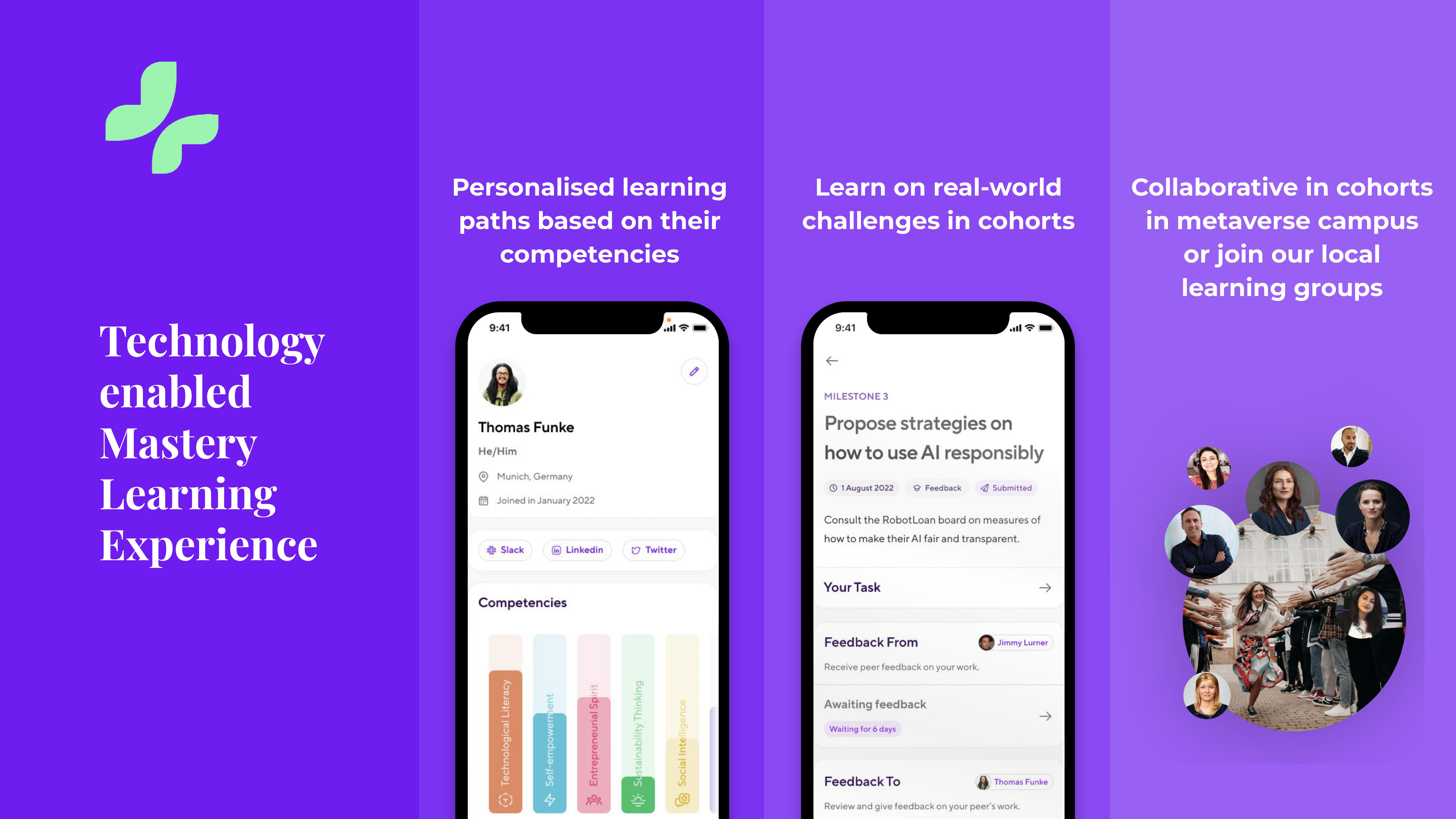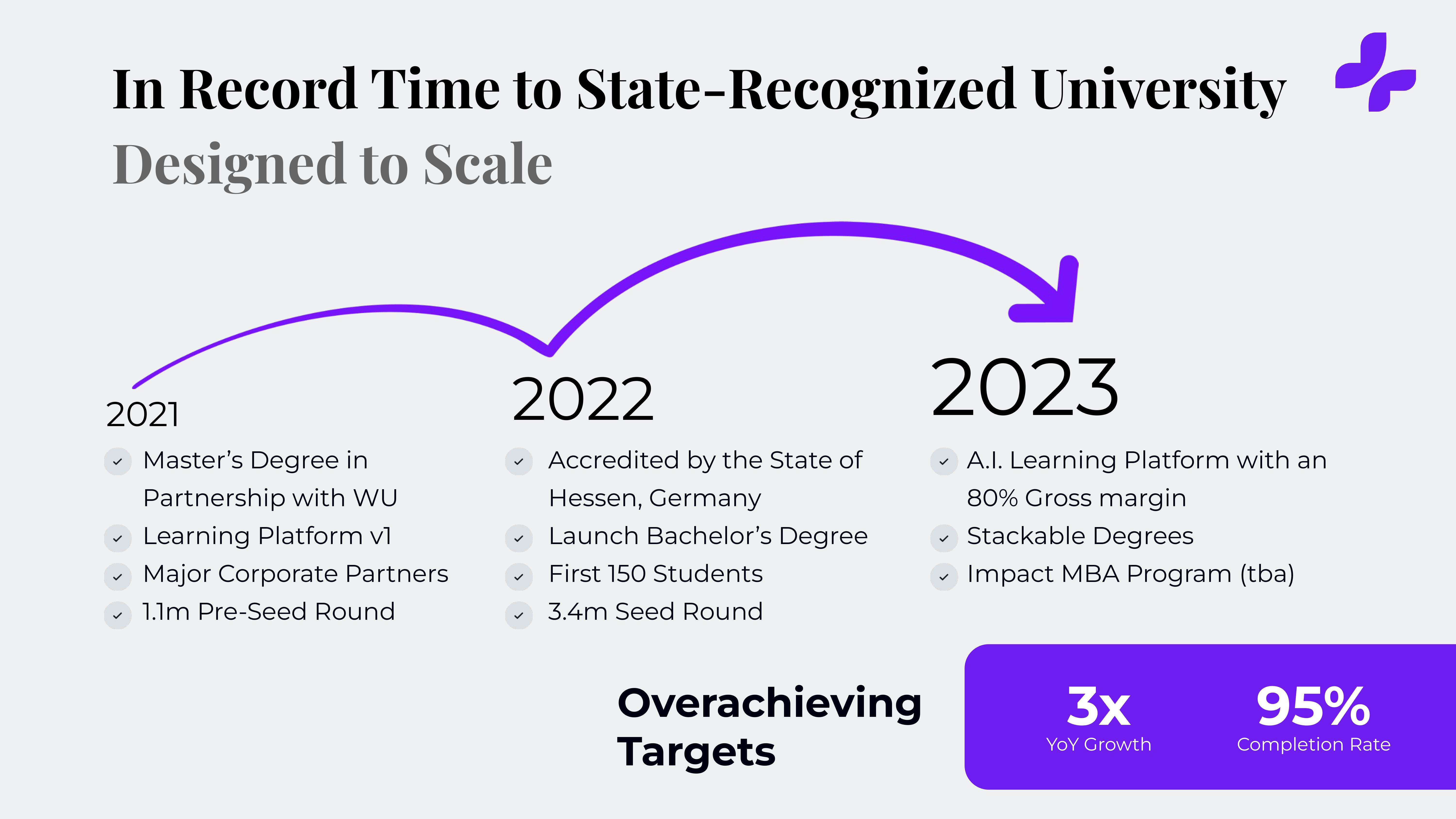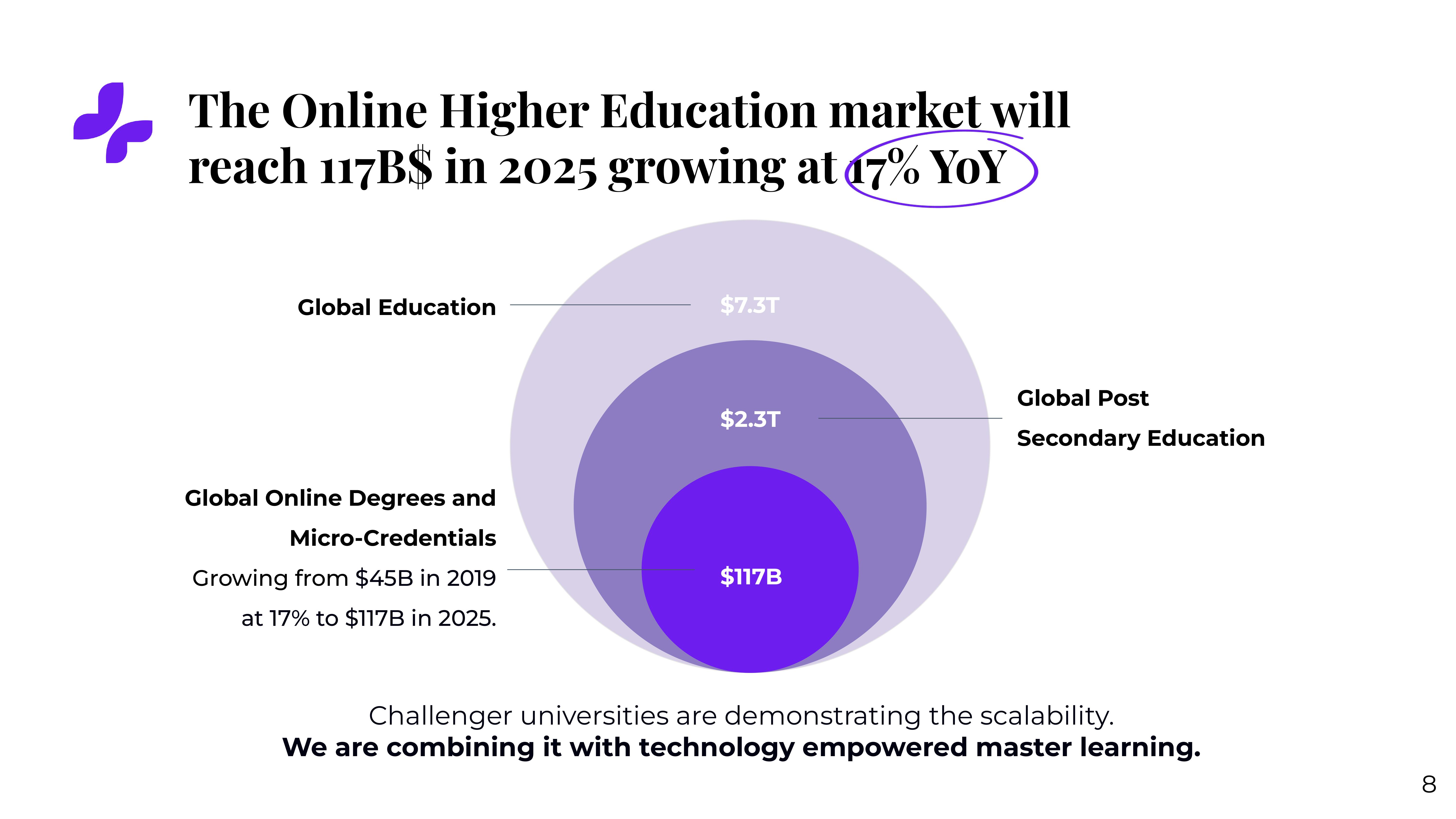Sample pitch deck: Tomorrow University $10M Series A deck
Over the years, I’ve seen a lot of startup decks covering all sorts of industries, verticals and stages. And I’ll admit that decks for education-based startups are pretty rare, and a team of folks trying to set up a brand-new, remote-only university is rarer still. Tomorrow University raised around $10 million recently. The university writes about the fundraise on its blog.
Right off the bat, I have a ton of questions, so let’s see how well the deck answers those!
We’re looking for more unique pitch decks to tear down, so if you want to submit your own, here’s how you can do that.
Slides in this deck
Last week, I wrote a post about how 30-slide decks are a thing of the past. Tomorrow University has perhaps overcompensated a little in the other direction, with a very terse 10-slide deck. It’s possible to tell your story in just a few slides. Guy Kawasaki, for one, famously advocates for a 10-slide deck, but the vast majority of founders haven’t got a firm enough handle on their story to pull that off.
According to the deck, the university is planning to offer an MBA program, so I’d expect this deck to be truly top-shelf, first-class, with very thorough financials and plans. In the language of universities: “This deck does not meet the minimum expectations.” We’ll get to that. For now, here are the slides Tomorrow University chose to include:
- Cover slide
- Historical context slide
- Goal slide
- Mission slide
- Solution slide
- Product slide
- Traction slide
- Market slide
- Team slide
- Closing slide
Three things to love
I had a pretty disappointing university experience, so I’m fully on board with the notion that the university experience overall could use an overhaul. This deck speaks my language in many ways.
Bringing some “real life” to education

[Slide 5] Here’s how Tomorrow University imagines the universities of the future. Image Credits: Tomorrow University
Humans are infinitely complex and nuanced creatures, so tailoring educational programs to individual wants and needs makes sense. A “metaverse campus” sounds pretty cringe (and nowhere in the deck does the university elaborate on what that means, specifically), but on the whole, I think this slide opens the door for investors to do some dreaming about what a next-generation university experience could be like. Real-life challenges, personalized learning and local learning groups sound a lot more like the remote-first world we are experiencing today than what we’d find in the current university experience.
Interesting traction
My two biggest questions before reading the deck: Is it accredited, and how is it measuring success? It turns out both questions were answered on the same slide. Well done!

[Slide 7] This traction slide does a lot of heavy lifting in the Tomorrow University deck. Image Credits: Tomorrow University
I like this slide, and it answers some great questions, like when it was founded, when it started offering degrees, and how much money it’s raised to date. But it also raised some questions.
For one, having a traction slide this thin on numbers is a little suspicious. It says it has 3x growth, but it doesn’t include what that growth is. Because that isn’t specified on the slide, my mind is invited to guess. Is it the revenue? Is it the number of students? If it’s the latter, it means that it went from 50 students in 2021, to 150 students in 2022, to 450 students this year. It has also raised around $30,000 per student in the program so far, which seems a little weird.
What does “in partnership with WU” mean? I assume that this is the University of Vienna, but that isn’t clarified anywhere in the deck. Also, how does accreditation work in Germany and Europe more broadly? The slide suggests that Tomorrow University is accredited in Hessen, which is a state in Germany that incorporates the cities Wiesbaden and Frankfurt. But is that sufficient to build a reputation as a university? The main accrediting body for higher education in Germany is the German Accreditation Council, so why wasn’t it the one to give Tomorrow University’s accreditation? Should it have? Is there a plan to?
Suffice it to say, I lack the cultural or local knowledge to really judge this slide, but I know if this came across my desk as an investor, I’d have a lot of questions for the founders. These are questions that, frankly, would be pretty predictable and might have warranted a slide in the deck or the appendix entitled “Accreditation road map” or similar.
As a startup, what you can learn from this slide is not to assume that your investors have all the pieces of the puzzle. If you operate in a regulated space (such as healthcare, education, or finance), make sure you have some slides on standby to talk investors through the regulatory landscape and where you are in the process.
Maaaaaarket siiiiiize
This market size is so huge it deserves a bunch of extra vowels.

[Slide 8] Yowzers! Image Credits: Tomorrow University
If Tomorrow University is suggesting it is going after the entire global education market, I would probably challenge it on that; for example, the self-serve platform might not work for everyone in the world. Perhaps post-secondary education is the company’s real TAM, but even so, I’m not really going to argue here: There’s little doubt that education is huge, and there’s an enormous opportunity for tech-forward solutions in this space.
There’s a lot of value in going after enormous, well-established, ripe-for-disruption markets, especially if you have a good go-to-market plan. The best way to do this is by showing the size of the market and then explaining how you’ll slice off your chunk of the pie.
As you may have gathered, it was a little hard to find parts of this that I really liked and that Tomorrow University did really well. With that said, let’s look at three things Tomorrow University could have improved or done differently, along with its full pitch deck!

